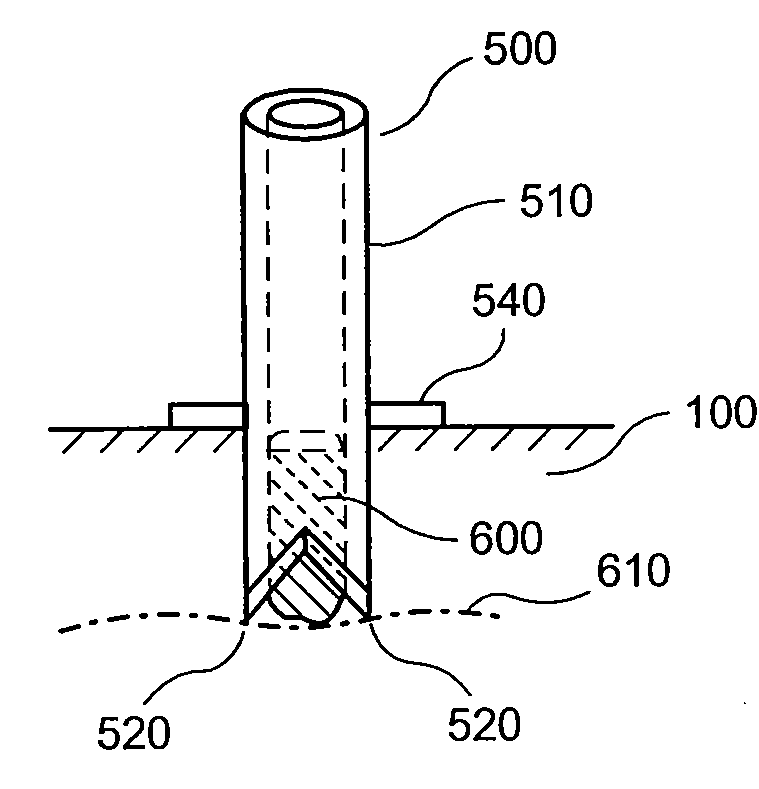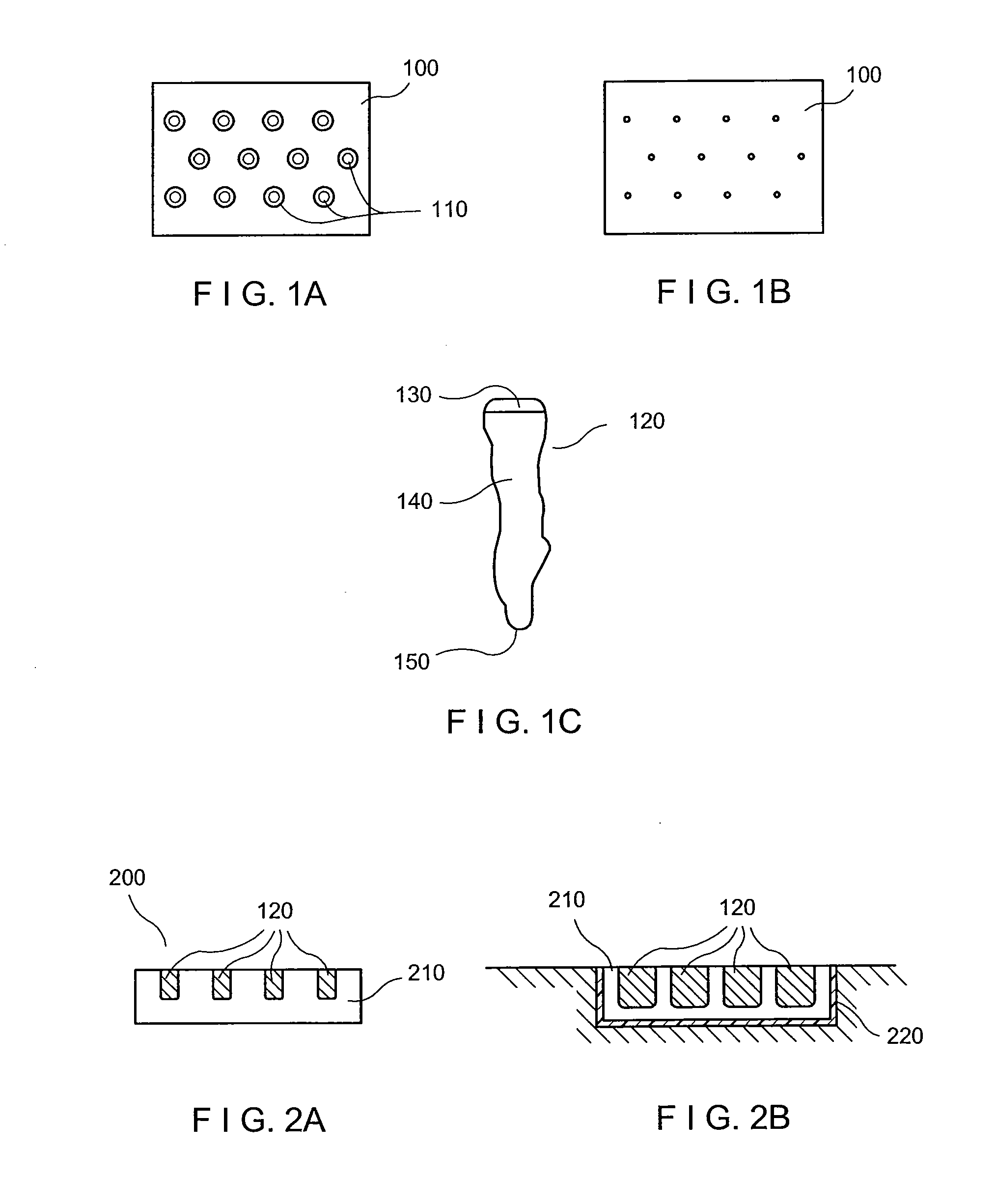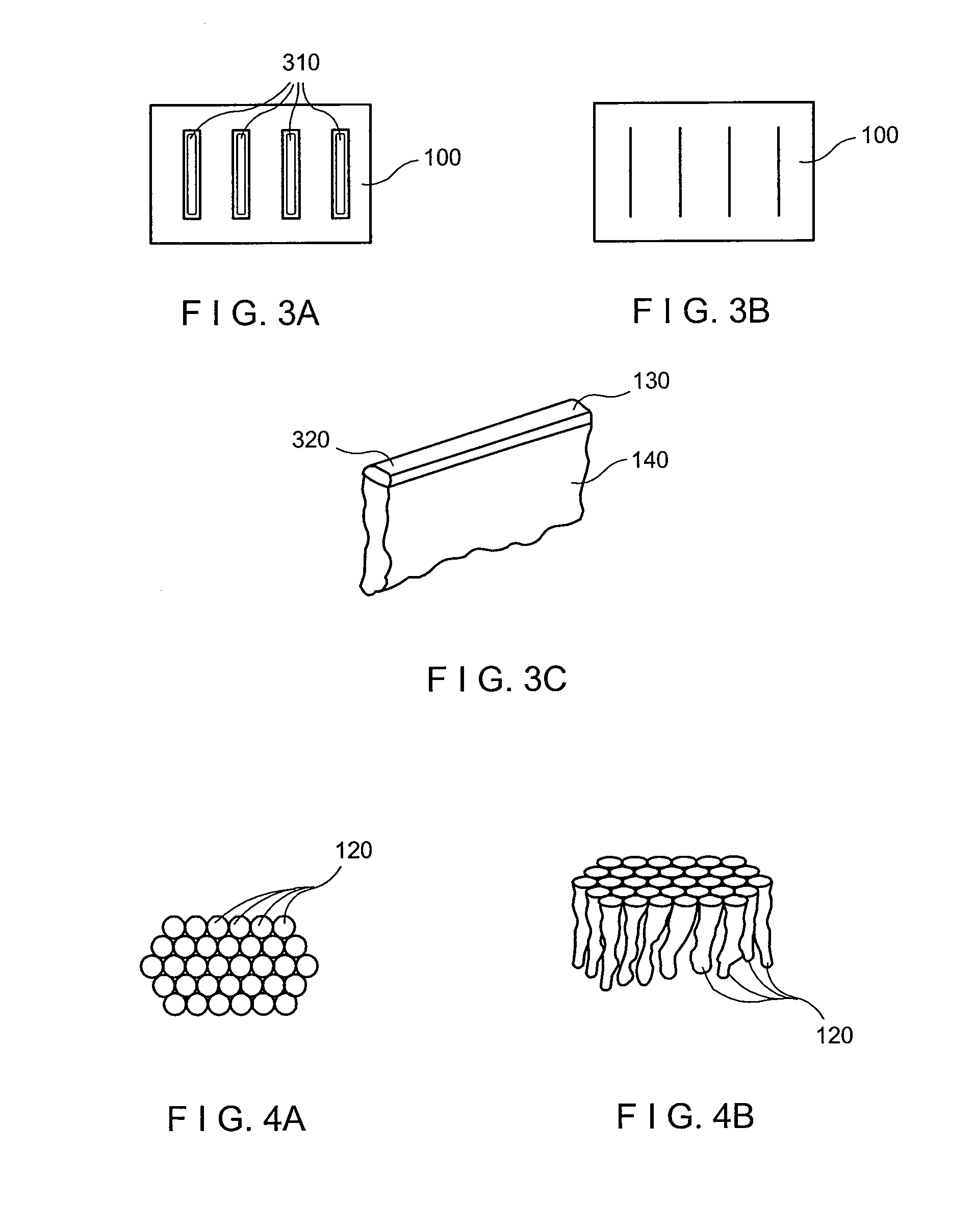Method and apparatus for tissue grafting
a tissue grafting and tissue technology, applied in the field of tissue grafting methods and apparatuses, can solve the problems of extensive healing time at the donor site, limited tissue availability for autografting, and large loss of sheet grafts after placement, etc., and achieve the effect of rapid healing of the donor si
- Summary
- Abstract
- Description
- Claims
- Application Information
AI Technical Summary
Benefits of technology
Problems solved by technology
Method used
Image
Examples
example
[0089]An image of a distal end of an exemplary apparatus that includes two points is shown in FIG. 8A. This apparatus is similar to the exemplary apparatus 500 illustrated, e.g., in FIG. 5A. A further rotated image of this exemplary apparatus is shown in FIG. 8B. The exemplary apparatus was formed using a tube having an outside diameter of about 1 mm, and an inside diameter of about 0.5 mm. The points or extensions were formed by grinding two opposite sides of the distal end of the tube at an appropriate angle relative to the axis of the tube. The angle used was about 30 degrees, although other angles may also be used. A beveled edge of the tube wall can be seen along the sides of the points or extensions. The shape of these points can facilitate insertion of the apparatus into tissue of a donor site and / or separation of a portion of micrograft tissue from the donor site, as described in more detail herein. For example, such micrografts can be separated and removed from the donor si...
PUM
 Login to View More
Login to View More Abstract
Description
Claims
Application Information
 Login to View More
Login to View More - R&D
- Intellectual Property
- Life Sciences
- Materials
- Tech Scout
- Unparalleled Data Quality
- Higher Quality Content
- 60% Fewer Hallucinations
Browse by: Latest US Patents, China's latest patents, Technical Efficacy Thesaurus, Application Domain, Technology Topic, Popular Technical Reports.
© 2025 PatSnap. All rights reserved.Legal|Privacy policy|Modern Slavery Act Transparency Statement|Sitemap|About US| Contact US: help@patsnap.com



